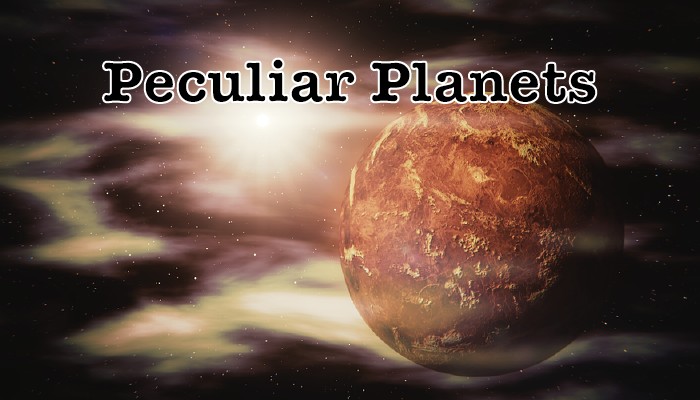
It is a question that humankind has been asking for thousands of years:
Are we alone in the Universe or are there other worlds like our own?
As of today, it is unknown whether or not inhabited planets exist outside of our own solar system. With the discovery of the extrasolar planet 51 Peg b in 1992, it was confirmed that our sun is not the only star that hosts planets and therefore the search for extraterrestrial life has expanded beyond our own solar system.
However, before we look for an inhabited exoplanet, we must understand what makes a planet habitable.
Of course, the best example of an inhabited (and hence habitable) planet is our Earth and therefore it is a reasonable approach to first look for Earth-like planets. So, the question we should ask is
What makes Earth habitable?
- The planet should be in the so-called habitable zone: the zone where the planet contains liquid water on its surface. One usually calculates this zone assuming an Earth-like atmosphere. [e.g. Lammer et al., 2009]
- The planet also needs to have an atmosphere that protects it from radiation but also keeps the planet warm with greenhouse gases. [e.g. Seager, 2013]
- The planet should be made of rock and should have a molten core. A convective outer core gives rise to a magnetic field that protects the planet from solar winds and cosmic rays. [e.g. Shahar et al., 2019]
Interestingly, we can couple all three points: greenhouse gases in the atmosphere can heat a planet that is too far away from its host star and therefore make it habitable. On the other hand, they can also heat a planet too much such that it becomes inhabitable.
The third point (a planet made of rock with a molten core) brings geodynamics into play: plate tectonics and volcanic outgassing contribute to burial and recycling of atmospheric gases [Seager, 2013].
In our solar system, Earth is the only inhabited planet, and it is also the only planet we know of that exhibits plate tectonics (including exoplanets).
For example, Venus, our neighbouring sister planet, is very similar to Earth in terms of size, mass and composition. Some studies even suggest that Venus might have been the first habitable planet of our solar system [Way et al., 2016].
But present-day Venus is an inhospitable planet with a very thick carbon dioxide atmosphere (90 times denser than that of Earth) and an extremely hot surface temperature (up to 750K) which is mainly because of runaway greenhouse gases. But why did Earth become habitable and Venus did not?
To explain their different evolutionary paths, plate tectonics might play a major role. Through plate tectonics, Earth can efficiently recycle carbon back into its surface (deep carbon cycle) and this may help to prevent a runaway Greenhouse effect.
The importance of plate tectonics on the habitability of a planet is still being studied, and it is not yet fully understood how efficient this recycling is.
Plate tectonics also influences the generation of a magnetic field. Plate tectonics efficiently cools the mantle by subducting cold slabs into the deep interior, which leads to high heat flow out of the core. Therefore, the style of mantle convection controls the convection in the outer core. This then generates the magnetic field of a planet. The magnetic field acts as a protective shield from the solar winds, which otherwise might erode the planet’s atmosphere. As discussed above, the atmosphere controls the climate mainly through greenhouse gases. The resulting climate influences the tectonic regime: cool climates are favourable for plate tectonics because they facilitate the formation of weak shear-zones in the lithosphere [Foley et al., 2016].
This coupling between the climate, mantle and the core is called the “whole planet coupling” [Foley et al., 2016] and as a whole, it might explain why Earth and Venus have evolved so differently.
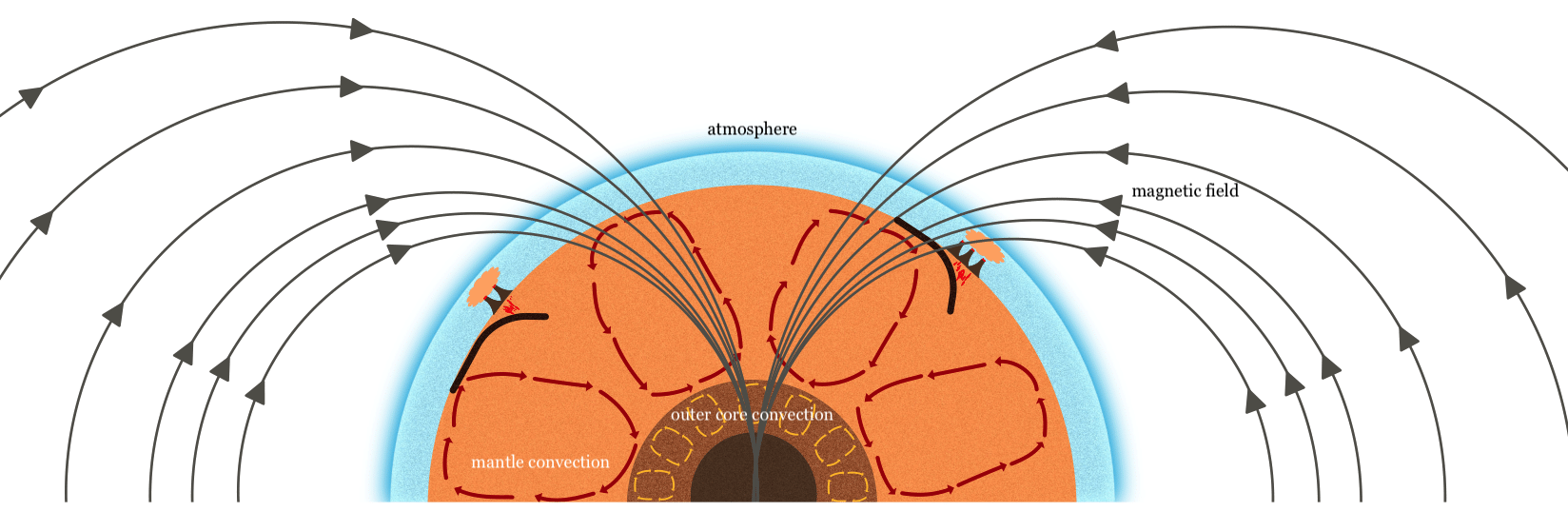
“Whole planet coupling“: The atmosphere controls the climate which influences the tectonic regime. Subducting slabs cool the mantle which leads to high heat flow out the core. Therefore, the mantle convection controls the type of convection in the outer core which can generate a magnetic field. The magnetic field protects the atmosphere from solar winds and cosmic rays.
To understand the habitability of exoplanets, we therefore need to investigate all the components of the whole planet coupling. Most interestingly for geodynamicists, it is the interior dynamics of a planet’s mantle that couples all these different components!
In the past years, astronomers have discovered many exoplanets, and we expect many more to join this list. For some of them, astronomers and astrophysicists can measure its size, mass, and sometimes even the atmospheric composition and/or surface temperature.
This is very different from studying the Earth, where we can gather a lot of information about the interior through, for example, seismology. Geophysicists, Astronomers, Astrophysicists and many other research disciplines have to collaborate such that they can understand an exoplanet’s whole planet coupling and potential habitability. For geodynamicists the challenge will be to infer the exoplanet’s interior dynamics from a limited amount of data only.
References: Foley, B. J. and Driscoll, P. E.: Whole planet coupling between climate, mantle, and core: Implications for the evolution of rocky planets, Geochemistry, Geophysics, Geosystems, Vol. 17, 2016. Lammer, H., et al.: What makes a planet habitable?, The Astronomy and Astrophysics Review, Vol. 17, 2009. Seager, S.: Exoplanet Habitability. Science, Vol. 340, 2013. Shahar, A., Driscoll, P., Weinberger, A. and Cody, G.: What makes a planet habitable?, Science, Vol. 364, 2019. Way, M. J., et al.: Was Venus the first habitable world of our solar system?, Geophysical Research Letters, Vol. 43, 2016.

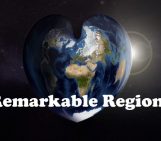
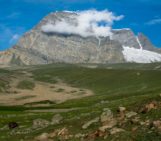

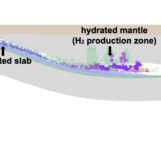
Ask Sawal
I have been looking for this Planetary Science article since long time. Thanks author.